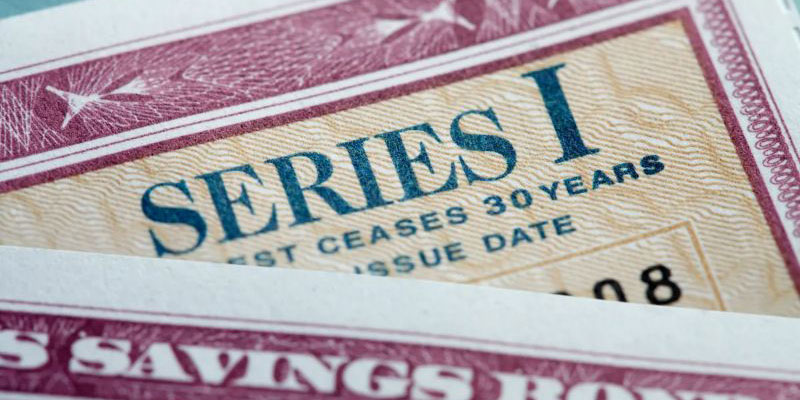
A series I bond is an investment, non-marketable savings bond issued by the United States government that pays exact interest rates and unpredictable inflation rates modified semi-annually. Series I bonds aim to provide investors with return and inflation protection. Series I bonds are regarded as low-risk investments since they offer investors a return while protecting their purchasing power against inflation.
The secondary markets do not allow for the purchase or sale of bonds. The interest rate on Series I bonds is fixed for the bond's duration and is indexed for inflation every May and November. These bonds have a 30-year maturity, with a 20-year initial maturity and a 10-year extended period. Although paper certificates can be bought with a minimum $50 purchase using your income tax refund, most Series I bonds are issued online, according to Treasury Direct.
Savings bonds from Series I shield you from inflation. You can receive both a fixed interest rate and an interest rate that varies with inflation with an I bond. Determine the inflation rate for the subsequent six months twice a year.
How Does Series I Bond Work?
The government of the United States guarantees the bond, traditionally one of the highest credit risks in the world, and pays interest for up to 30 years or until you cash it out. You will receive the current interest rate for the first six months you own the I bond. If I bond is issued, for instance, between November 2023 and April 2024 will pay interest at a rate of 6.89 percent per year. That implies that you will continue receiving that rate for six months’ even if you buy the bond in April. Your bond will then be adjusted to the new rate declared in May.
The bonds cannot be redeemed for the first 12 months after purchase. The final three months' interest will be penalized if you save the bond before it has been in force for five years. But, if a natural disaster has harmed you, additional rules can be applied.
How to Get Series I Bonds?

Identify Your Eligibility
You must determine your eligibility to purchase I bonds because the U.S. Treasury only lets some do so.
You must meet one of the following requirements:
- U.S. citizens, even if they live abroad
- An American citizen
- A civilian employee of the United States government, wherever they may reside
In some circumstances, trusts and estates can buy I bonds, but companies, partnerships, and other organizations generally cannot.
Activate Your Treasury Direct Account
You can open a TreasuryDirect account if you satisfy the requirements. You can use this account to buy bonds directly from the government, including Series EE bonds, Treasury bills, Treasury notes, and Treasury bonds, as well as TIPS.
You will require an Identification number for taxpayers (such as your Social Security number) to open a TreasuryDirect account, an email address, a bank or savings account, a web browser that supports 128-bit encryption, and a registered U.S. address.
You'll fill out the prompts with your information, and you may create the account quickly. For added security, you'll generate three security questions and a password.
Make Your Purchase
TreasuryDirect will email your account number to you once you've created the account, and you can use it to log in to your account. When logged into the history, choose "BuyDirect," then select the quantity of Series I bonds you want to buy. Then decide which bank account to use and when to buy something. Moreover, you can arrange a recurring purchase.
How Much Money Can Be Put into Series I Bonds?

Series I bonds can be bought for the following amounts in any given year:
- I bond issued by TreasuryDirect worth $10,000
- when you receive your federal income tax refund, $5,000 in the paper I bond.
If their tax refund is sufficient to cover the full amount of the paper I bond portion, I bond might be worth up to $15,000 yearly. It makes sense to increase the amount withheld from your paycheck if you want to benefit from this bonus allocation of I bonds since many savers must know that their federal tax return entitles them to an additional serving.
Any bonds you purchase for yourself or on your behalf count towards the cap. This regulation does not apply to bonds that have been transferred to you due to the death of the original bondholder. The sum of this instance is exempt from the cap.
It's also crucial to remember that I bond beneficiaries are subject to these restrictions. So, a person might purchase any number of bonds available for any TreasuryDirect account holder, even kids. The beneficiary is subject to the same annual gift limits: $10,000 for electronic bonds and $5,000 for paper bonds bought with federal tax refunds.
As a result, a single person may buy up to $15,000 worth of I bonds per year, while a family of four may buy up to $60,000 price of I bonds in a single fiscal year. The family would need a sizable refund check to afford the opportunity of $20,000 in paper bonds.
Pros and Cons of I Bond
Benefits of I Bonds
- Delivers an excellent inflation buffer against inflation
- Interest is not subject to state or municipal income taxes.
- This extremely safe investment can act as a portfolio stabilizer
- Simple online purchase, management, and redemption through TreasuryDirect.gov
Disadvantages of I Bonds
- The typical annual investment cap is $10,000.
- A year-long lock-up term might be too expensive.
- Paying the interest penalty for redeeming within five years may be costly.
- Comparatively poor choice for long-term investors (too much opportunity cost)
Bottom line
A non-tradable, interest-bearing government savings bond issued by the United States is called a series I bond. Series I bonds are considered low-risk investments since they provide investors with a return and inflation protection on their purchasing power. The secondary markets do not accept bonds for purchase or sale.



